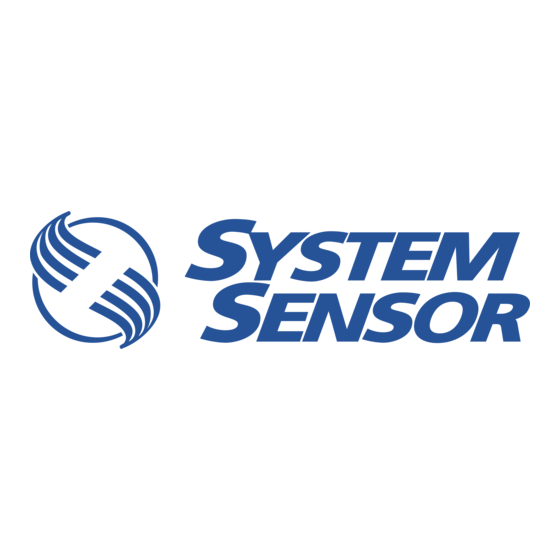
Table of Contents
Advertisement
Quick Links
INSTALLATION AND MAINTENANCE INSTRUCTIONS
MHRA and MHWA Mini-Horns
MHRZA and MHWZA Silencable Mini-Horns
Specifications
General Specifications
Standard Operating Temperature:
Humidity Range:
Sounder Frequency:
Input terminal wire gauge:
Horn dimensions:
MHRA/MHWA Electrical Specifications
Nominal Voltage:
Operating Voltage:
Operating Voltage with MDLA:
MHRZA/MHWZA Electrical Specifications
Nominal Voltage:
Operating Voltage:
Operating Voltage with MDLA:
Silence time:
Power down time to reset silence:
General Description
The SpectrAlert Advance MH Series mini-horns are available in
red or white. They feature 12 or 24 volt operation, high and low
volume settings, and temporal or continuous tones. These small
footprint horns can be mounted to single gang back boxes for
aesthetically sensitive applications. If required, the MDLA module
can be used to provide synchronization.
The models MHRZA/MHWZA include an led alarm indicator and
silence switch. During alarm, pressing the silence switch will si-
lence the horn for a maximun of 10 minutes. The silence can be
reset by removing power for a minimun of 4 seconds.
Also included in these models is a silence test feature. During an
alarm, if the silence button is held down for more then 5 seconds
and released, the unit will silence but resound in 10 seconds.
These devices are to be installed according to the requirements of
local codes/authorities and CAN/ULC S524.
NOTICE: This manual shall be left with the owner/user of this
equipment.
Fire Alarm System Considerations
The National Building Code, and CAN/ULC S525, requires that
all horns, used for building evacuation produce temporal coded
signals. Signals other than those used for evacuation purposes do
not have to produce the temporal coded signal.
Power Supply Considerations
Panels typically supply DC filtered voltage or FWR (full wave
rectified) voltage. The system design engineer must calculate the
number of units used on a loop based on the type of panel supply.
Be certain the sum of all the device currents does not exceed the
current capability of the panel. Calculations are based on using
the device current found in the subsequent charts and must be
compatible with the current specified for the panel or power sup-
ply used.
0°C to 49°C (32°F to 120°F)
10 to 93% non-condensing
3kHz (nominal)
12 to 18 AWG
4.6˝L×2.9˝W×.45˝D (117 mm L×74 mm W×11.5 mm D)
regulated 12vfwr, regulated 24dc/fwr, special application 12vdc
8-33vfwr, 9.5-33vdc
9-33 vfwr, 9.5-33vdc
regulated 24dc/fwr
16-33 volts
16-33 volts
10 minutes max.
4 seconds min.
Loop Design and Wiring
The system designer must make sure that the total current drawn
by the devices on the loop does not exceed the current capability
of the panel supply, and that the last device on the circuit is oper-
ated within its rated voltage. The current draw information for
making these calculations can be found in the tables within this
manual. For convenience and accuracy, use the voltage drop cal-
culator on the System Sensor website (www.systemsensor.com)
or CD-ROM. When calculating the voltage available to the last
device, it is necessary to consider the voltage drop due to the re-
sistance of the wire. The thicker the wire, the smaller the voltage
drop. Wire resistance tables can be obtained from electrical hand-
books. Note that if Class A wiring is installed, the wire length may
be up to twice as long as it would be for circuits that are not fault
tolerant.
1
3333 Unity Drive, Mississauga, ON L5L 3S6
800/736-7672, FAX: 905-812-0771
www.systemsensor.ca
I56-3027-002
5/21/2019
Advertisement
Table of Contents

Summary of Contents for System Sensor SPECTR Alert Advance Series
- Page 1 For convenience and accuracy, use the voltage drop cal- culator on the System Sensor website (www.systemsensor.com) The models MHRZA/MHWZA include an led alarm indicator and or CD-ROM. When calculating the voltage available to the last silence switch.
- Page 2 Wiring MHRZA/MHWZA SOUNDER OUTPUT (dBA) IN ANECHOIC ROOM Figure 1. Non-Synchronized devices; any combination of Horn Horn/strobe Strobe Only models powered by a 2-wire circuit Switch Sound Volume Power Voltage Position Pattern Supply Two Wire System Horn Horn/strobe Strobe Only Any Mix of Models Wired for Tandem Temporal...
- Page 3 Mounting 1. The MH Mini-Horn is intended for mounting to a standard ˝ deep single gang box or a standard 4 × 4 box, with sin- gle gang mud ring, which allows sufficient clearance for con- duit entrance. 2. The MH Mini-Horn is compatible with DC line supervision. The horn is polarized and has terminals marked with polarity.
- Page 4 Underwriters Laboratories’ standards. However, the horn may not alert a sound Three-Year Limited Warranty System Sensor warrants its enclosed smoke detector to be free from defects in ma- Edwards Blvd., Mississauga, Ontario L5N 2W7, RA #__________. Please include a terials and workmanship under normal use and service for a period of three years note describing the malfunction and suspected cause of failure.


Need help?
Do you have a question about the SPECTR Alert Advance Series and is the answer not in the manual?
Questions and answers